Main Article:
– MAN NG363F
The MAN NG363F (MAN A24) is the first model of articulated bus acquired by SMRT Buses, having previousy inherited Mercedes-Benz O405G buses from its predecessor TIBS. The first of these buses, a demonstrator unit SMB388S, began service in 2013. This article will cover more about the unique demonstrator unit.
The bus is bodied with a MAN Lion’s City G bodywork manufactured by Gemilang Coachworks of Malaysia, under license from MAN. The bus was fully assembled by Gemilang in its Johor Bahru assembly plant before final delivery to Singapore.
The Bus
In 2013, SMRT Buses received a MAN NG363F demonstrator unit for road testing and evaluation by MAN’s local dealer, ST Kinetics. The bus was registered on 2 April 2013 as SMB388S, the sixth demonstrator bus received by SMRT Buses. Sharing many technical similarities with its rigid bus cousin, the MAN NL323F, SMRT owned at least 400 MAN NL323F buses prior to the registration of SMB388S.
| Basic Technical Specifications | |
| Engine | MAN D2066 LUH-33 engine Inline 6-cylinder two-stage turbocharged with intercooling, 10518cc Power/Torque output of 360 hp (265 kW) @ 1900 rpm / 1800 Nm @ 1000 – 1400 rpm |
| Emission Standard | Euro V compliant Exhaust Gas Recirculation (EGR) technology combined with MAN’s own PM-Kat® exhaust treatment system, hence doing away with the need for diesel exhaust fluids, and achieving the the Euro V emission standard. |
| Transmission | Voith DIWA 864.5 gearbox, four-speed automatic |
| Bodywork | MAN Lion’s City G Bodywork Chassis built in Germany, MAN’s Lion City G bodywork supplied and assembled by Gemilang Coachworks, licensed by MAN. |
| EDS | Gorba imotion Electronic Display Signage (EDS) Connected to a Gorba imotion CU8 controller |
| Air-conditioning | Two Denso LD8i roof-mounted air-conditioning units |
The bodywork used on this bus was similar to MAN’s integral Lion’s City G or Lion’s City GL buses, but manufactured by Gemilang Coachworks of Malaysia, under license from MAN. It was built using Alcan’s EcoRange® body structure system, which primarily uses lightweight aluminium for extrusions, sheets, and joining elements. The bus was fully assembled by Gemilang in its Johor Bahru assembly plant before final delivery to Singapore.
On the interior, the interior fixtures and their configuration are roughly similar to the Batch 2 NL323Fs, with identical seats, grabpoles, handgrips arranged in a comparable layout. SMRT retained the unique sliding plug doors supplied by Masats (previously used for MAN NL323F buses) for the middle and rear exit doors. A single wheelchair bay is located in the middle of the bus, and a manual wheelchair ramp is installed only on the middle door. A full-low-floor design offers step-free access between all doors, across the articulation unit and up to the last row of seats. Finally, a unique, translucent articulation bellow allowed for natural light into the articulation unit during daylight hours.
SMB388S made its revenue service debut on 18 April 2013, deployed on Bus Service 190 between Choa Chu Kang and New Bridge Road. It has since been under SMRT’s Kranji Depot (Gali Batu Zone) and made appearances on a variety of bus routes, such as 61, 67, 106, 176, 180, 184, 188, 300, 302 and 700/700A.
The Legacy
SMB388S was acquired as a direct replacement for TIB838H, the very first articulated bus in Singapore, which was deregistered shortly before this bus entered revenue service. Breaking away with the tradition of registering buses in numerical order, the somewhat auspicious SMB388S registration bears resemblance to it’s predecessor.
The introduction of SMB388S is reminiscent of how TIB838H came about. TIB838H, a Mercedes-Benz O405G, was acquired by TIBS as a high-capacity version of the previously-introduced and highly successful Mercedes-Benz O405. Along with similarities in the chassis, bodywork was also very similar, both built by Hispano Carrocera. For SMB388S, the MAN NG363F chassis is a high-capacity version of the MAN NL323F chassis, and was also built to similar interior configurations as the previously-introduced and successful MAN NL323Fs.
SMB388S scored several firsts. It was the first bendy bus to be brought in by SMRT Buses, and the first fully-low-floor and wheelchair-accessible bendy bus in Singapore. It is the second transit bus in Singapore to use Gorba-manufactured EDS (after SMB136C and not including PA9588S), and the first transit bus in Singapore to have air-conditioning units supplied by Spheros.
Additional Specifications:
SMB388S has a licensed capacity for 130 passengers: 54 seating and 76 standing passengers. Originally fitted with Spheros air-conditioning units, they were replaced by Denso LD8i units in 2016, similarly used on the Production Batch buses.
Exterior
On the exterior, SMB388S shares many bodywork elements in common with SMRT’s MAN NL323F buses also assembled by Gemilang Coachworks, giving it an appearance of an elongated NL323F. However, unlike the NL323Fs, the bus was not fitted with the large, curved roof attachment.
The bus is fitted with a set of Electronic Display Signages (EDS) supplied by Gorba. Production batch buses would revert to Mobitec, which is more commonly used within the SMRT fleet.
In addition, the bus was fitted with Spheros roof-mounted air-conditioning units, unique to the SMRT fleet. They would later be replaced with Denso LD8i air-conditioning units in standardization with other MAN NL323F and MAN NG363F buses. The above photo shows SMB388S with Spheros units installed.
Interior:
The interior of the bus has two cabins permanently joined by an articulation unit. The bus seats four-abreast with a central aisle running the length of the bus. Grab poles and round hand grips are located on both sides of the aisle, with additional handrails at the standing area, or stanchion poles near the exits or articulation unit. All seats also have hand grips to provide commuters with additional support.
Bus stopping bell-pushes are located around the bus cabin, either mounted to stanchion poles or on the pillars in-between windows. Emergency hammers are also located on these pillars.
The bus is fully-low-floor, offering step-less access throughout the length of the bus.
Interior panels and fittings are very similar to that used on MAN NL323F buses, such as polished metal stanchion poles, grey plastic handlebars and handgrips and Vogelsitze System 750/3 seats in blue and purple, with red for priority seats. The air-conditioning ducts, similar to the earliest batch of MAN NL323F buses, do not feature adjustable vents.
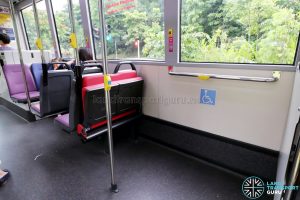
A single wheelchair bay is located opposite the middle door of the bus, doubling up as a standee area. It has space for one person-in-wheelchair, with wheelchair accessibility offered via a manually-deployed ramp at the middle door.
The wheelchair backrest doubles as a foldable seat for two people when not in use.
The rear cabin only has front-facing seats and a third exit door, and the last row of the bus has five seats.
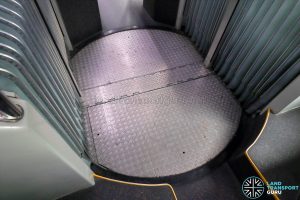
Finally, the articulation unit consists of a turntable platform with two hinges in the middle, allowing for both pitch and yaw motion. Folding bellows help weatherproof the articulation unit. Stanchion poles are installed by the side of the central passageway.
While the bus was initially installed with translucent bellows (allowing for some natural lighting to enter the articulation unit), these were later replaced with opaque ones similar to the Production Batch of MAN NG363F buses.
Finally, the driver’s compartment has a similar layout to the MAN NL323F buses. However, it features two CCTV monitors for better monitoring of the surroundings. When the doors are opened, the monitors switch to a view of the exit doors, allowing the driver to monitor alighting activity.
The turquoise unit on the bottom left is the New On-board Bus Equipment (NOBE) fare collection system. Next to it is the Farebox on the left, and the Trapeze Common Fleet Management System (CFMS) on the right. The two CCTV monitors are located behind the NOBE device.
Gallery:
The photo on the left shows SMB388S with its original Spheros air-conditioning units; they were later replaced with Denso units as shown on the right.
External Links & References:
- —
Back to MAN NG363F
Back to Bus Models
Back to Bus
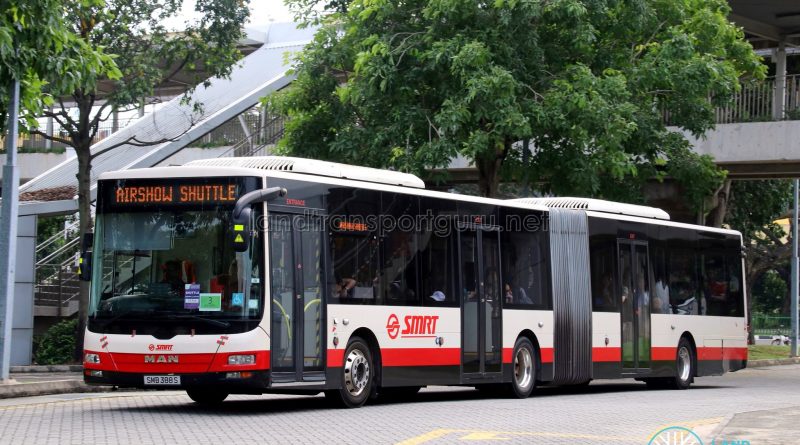
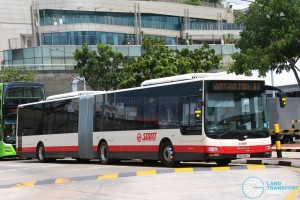
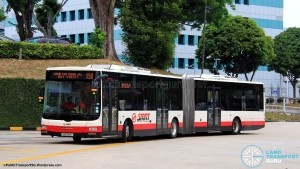
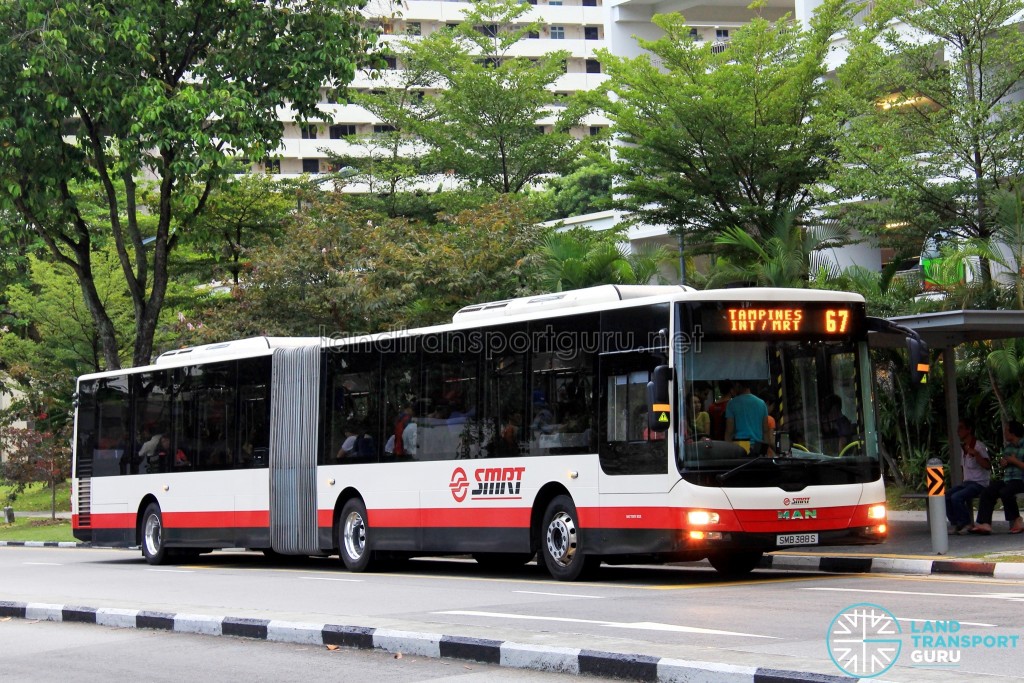
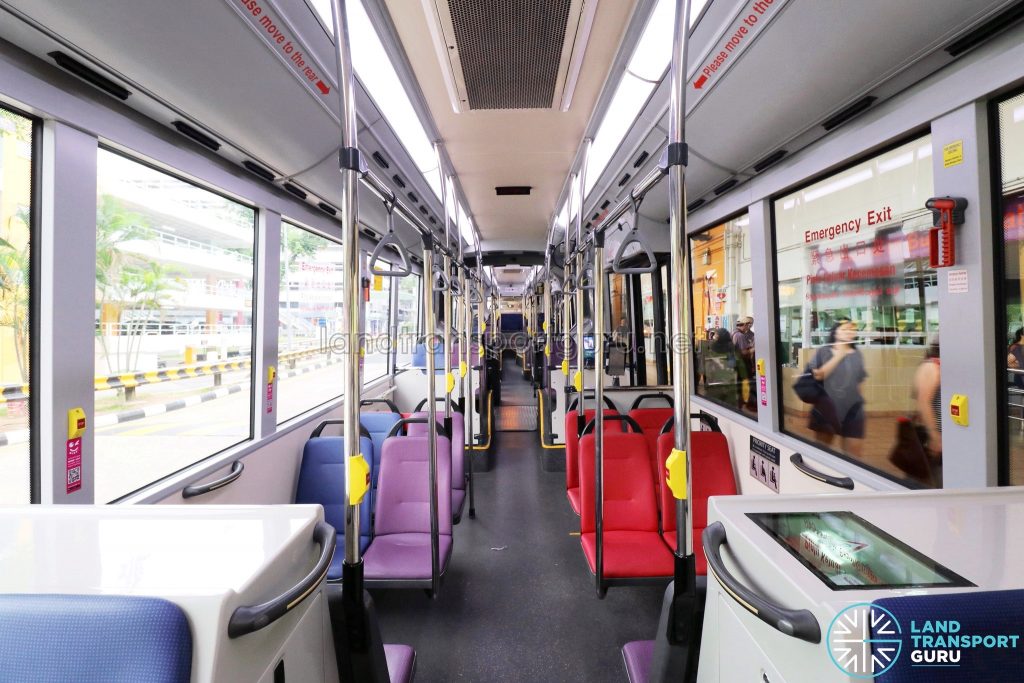
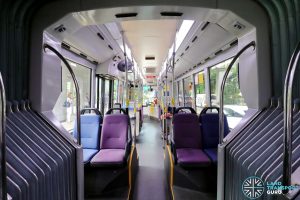
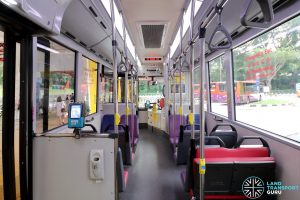
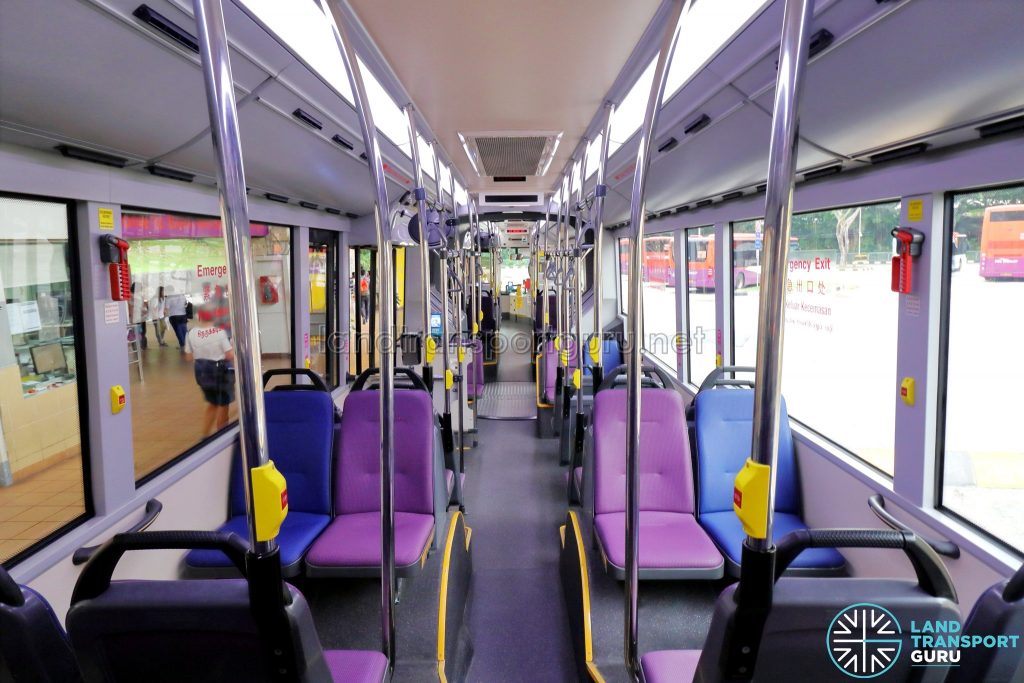
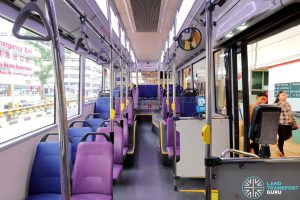
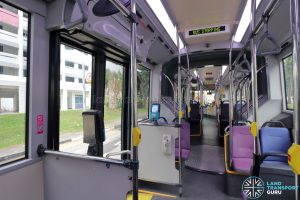
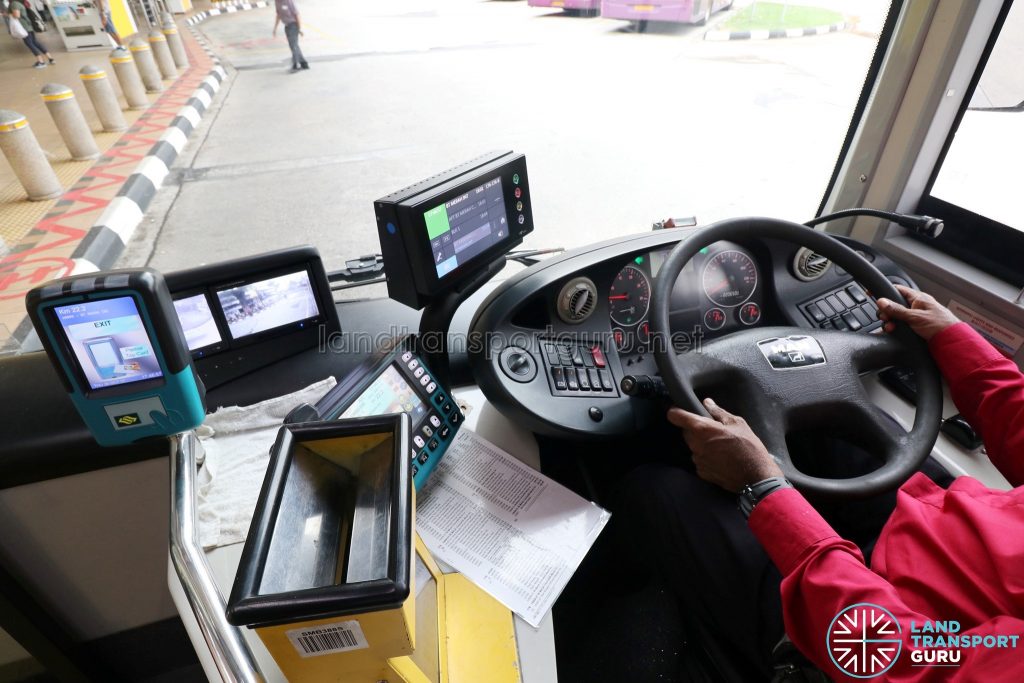
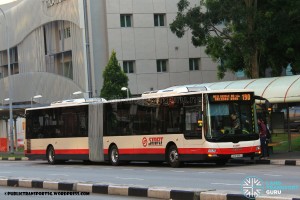
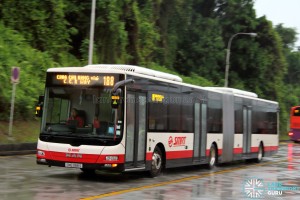

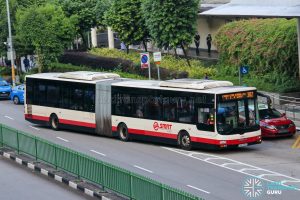
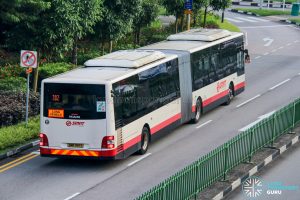
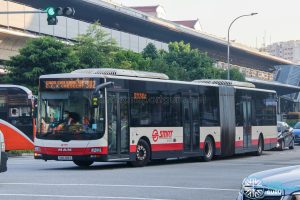
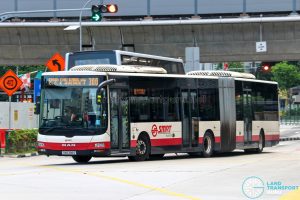
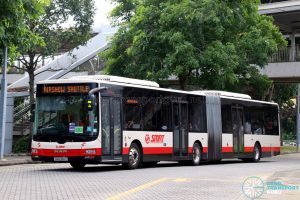
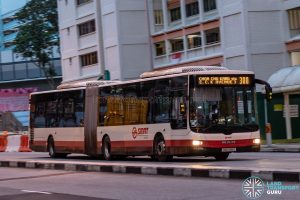

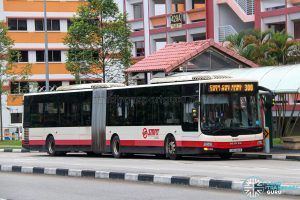

Smb388s: smrt old white red black livery
Smb8001e-smb8010d: lush green livery (sbs transit, formerly smrt)
Smb8011b-smb8039y: smrt pixel livery
LTA should reregistered as SG…
SMRT spoilt market by deploying bendy on trunk svc like 169 & 184..The 3 A24 on 169 better off with 858 and the 184 should be for CCK Feeders..300 & 301 DDs is really a joke..
Neh i like smb plate
Also bendy on 67,190,180,184,176,61,169,969,965 is good because all bendy on feeder is boring
It’s a permanent bus on 184 now, although on some occasions it may do a Choa Chu Kang Feeder for it’s S1(morning split) shift